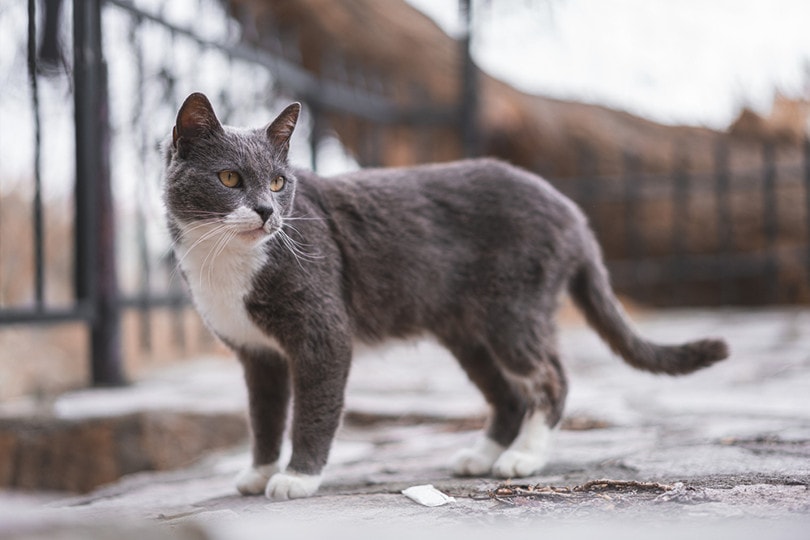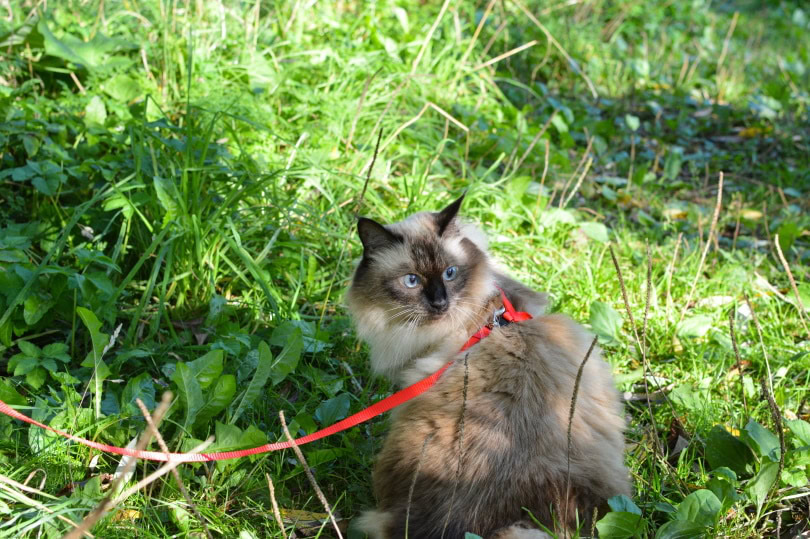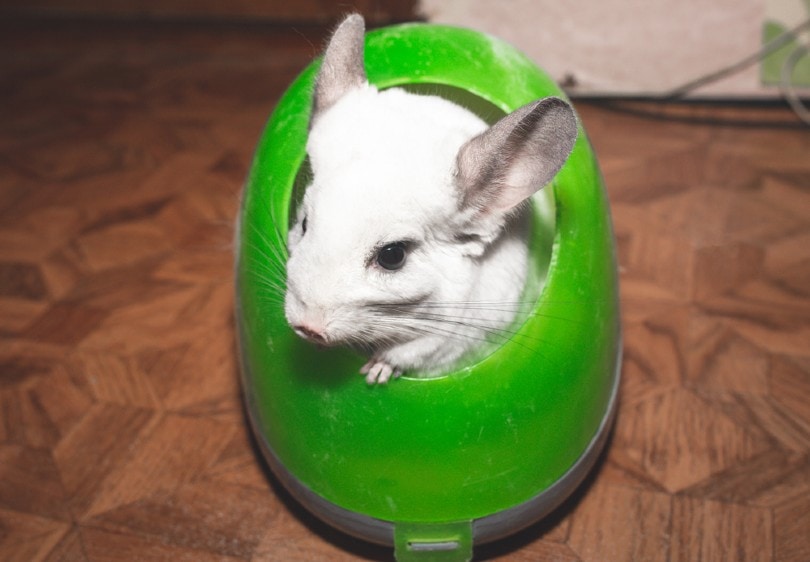VET APPROVED

The information is current and up-to-date in accordance with the latest veterinarian research.
Learn more »Click to Skip Ahead
Based on risks associated with outdoor living, cats are safest when kept indoors. However, some cat owners may consider switching indoor cats to combined indoor-outdoor living due to many possible reasons and circumstances. But is it possible for indoor cats to become outdoor cats?
While some indoor cats can adjust to going outside, saving this option as a last resort is best due to the numerous risks they may face. Keep reading to learn how to transition your indoor cat to an indoor-outdoor kitty as safely as possible, if this is something you have decided to do. We’ll also cover some alternative solutions that may help you avoid having to make this switch.

Why Are Cats Typically Safest Indoors?
Compared to indoor and combined indoor-outdoor living cats, purely outdoor kitties have significantly shorter average lifespans.1 Outdoor cats are vulnerable to several risks not shared by indoor cats, including:
- Car accidents
- Predators
- Diseases like feline leukemia virus
- Parasites
- Poison
- Harsh weather conditions
All these dangers contribute to making life harder and shorter, particularly for exclusively outdoor cats. In addition, outdoor kitties pose a threat to local birds and wildlife. Stray and outdoor cats kill millions of birds and small mammals each year.2

Why Would You Want to Move an Indoor Cat Outdoors?
Cat owners may feel their kitties should make this transition for several reasons despite the risks. The most common reason for making the move outdoors is that some cats develop behavioral problems such as inappropriate urination or defecation. However, in these circumstances, before making a decision to let your cat out in the hope of solving the issue, or in reality becoming ignorant of it despite it often persisting, it’s important to get your cat checked out by the vet, as in most cases there are underlying medical causes responsible for inappropriate toileting rather than behavioral ones.
Some cats may seem bored and restless indoors, frequently displaying undesirable behavior like scratching furniture, pacing, and vocalizing. In some of these cases, the observed signs often indicate a lack of sufficient physical exercise, mental stimulation, and environmental enrichment, while sometimes they can also point to a medical problem. Previously outdoor cats may struggle to adjust to life indoors, while others may just want a change of scenery.
Some cat owners may also worry that their cat doesn’t get enough exercise indoors or that they aren’t able to perform natural cat behaviors like hunting and climbing trees. Let’s debunk some of these myths.
Can Cats Live Solely Indoors?
They surely can! If all of their needs are met with care, cats can lead a happy and fulfilled life by being only indoors. This means they need to have enough exercise on a daily basis, both through interacting with their owners and playing on their own, using a variety of toys, as well as using puzzle feeders. Environmental enrichment with plenty of toys, scratch posts, hiding raised spots, cat trees, vertical perches, access to several window sills, and listening to cat music ensures they are able to exhibit their natural behaviors.
Playing with toys on a wand encourages their natural hunting behavior through pouncing, stalking, jumping, catching, and biting into the toy, as well as observing birds and squirrels from a window. Not to mention the wildlife lives that will be spared this way. So if you are in between minds whether to let your cat out, and your area is a high-traffic one or full of stray or feral cats, predators like coyotes, or other dangers, consider making a conscious effort to improve your cat’s indoor environment, as this may be all they need to continue being happy, or you can also consult with your vet.
How to Transition an Indoor Cat to Outdoor Living
However, we do understand that in some circumstances, and in safe rural areas, it may be necessary to let the cat outside. If you need to switch your indoor cat to a combined indoor-outdoor lifestyle, keeping in mind the risks and considerations we discussed, here are some tips to do so as safely as possible.
- First, ensure your cat is spayed or neutered, has all their shots, and is on a monthly parasite prevention product.
- Talk to your veterinarian before you switch to see if your cat needs additional shots to protect against diseases that mainly impact outdoor kitties. Your vet can also help you choose a feline control product that guards against fleas, ticks, heartworms, and intestinal worms.
- Supervise your cat when they first start spending time outside. Make the transition slowly, gradually increasing the time your kitty is allowed outdoors.
- If possible, try to let your cat out into a fenced backyard. Your cat may eventually climb the fence, but it will allow some protection from cars and predators. The cat can also learn that the yard is a safe space to retreat if they’re being chased.
- Make sure your cat is microchipped and wears a breakaway collar with your contact information. If you have close neighbors, tell them your cat will be moving outside and ask them to inform you if your kitty becomes a nuisance. GPS collars may also be useful in allowing you to track your cat’s whereabouts.
- Continue feeding your cat indoors. Avoid leaving food outside as it may attract wildlife, predators, or insects.
- The night is the most dangerous time for outdoor cats. If possible, bring your cat inside at night. When coming into the house isn’t an option, consider a garage, barn, or shed instead.

Alternative Solutions to Help Keep Your Cat Indoors
If you feel your cat would benefit from outdoor activity but worry about their safety, consider training them to walk on a leash. Some cats are more suited for this than others. Another option is to build or buy a “catio” or fully enclosed outdoor space for your kitty.
Before banishing a cat with presumed behavioral problems outdoors, talk to your veterinarian in order to rule out medical causes first. Afterward, your cat may benefit from a visit to a behavior specialist or prescription medications.
Although it may sound as exciting as the outdoors, you can provide an interesting and enriching environment for your indoor cat. Indoor cats should have access to toys, scratching posts, and vertical space such as cat trees or shelves. Also, it is important to spend time playing with your cat every day.
If your cat is left alone frequently, consider hiring a pet sitter to play with them during the day. You could also use an interactive pet camera to monitor and talk to your cat or leave the TV or music playing when you go.


Conclusion
As we’ve learned, some indoor cats can become outdoor kitties, but this lifestyle switch also puts them in all kinds of danger and may harm local birds and wildlife. Before transitioning an indoor cat, work with your veterinarian to ensure you’ve explored every possible solution to keep your cat inside without stress on either of you. Consider providing secure outdoor access using a harness and a leash or catio instead of making the full switch. In some cases, letting a cat live outside is the only solution to prevent them from ending up in an animal shelter or worse, if rehoming isn’t possible.
- “How to Transition Your Cat to an Indoor/Outdoor Lifestyle”
- “Can an Indoor Cat be a Part-Time Outdoor Cat?”
- “My Kitty Wants to be an Outdoor Cat: What Do I Do?”
- Secret lives of feral and free-roaming house cats tracked | ScienceDaily
- Indoor Cats vs. Outdoor Cats
- Longevity and mortality in cats: A single institution necropsy study of 3108 cases (1989–2019) | PLOS ONE
Featured Image Credit: lkoimages, Shutterstock












